1962 FERRARI 250GT SHORT WHEELBASE BERLINETTA COACHWORK TO PININFARINA DESIGN, BUILT BY SCAGLIETTI Chassis No. 3695 GT Engine No. 3695 GT Giallo fly with black leather interior Engine: V12, two single overhead camshafts, one for each cylinder bank, three Weber twin-choke carburetors, 2,953cc, 250bhp at 7,000rpm; Gearbox: four-speed and reverse manual in unit with engine; Suspension: upper and lower wishbone front suspension with solid rear axle mounted upon leaf springs; Brakes: four wheel Dunlop disc brakes. Left hand drive. By 1959, Ferrari was building his last long wheelbase 250GT 'Tour de France' Berlinettas. The very last few had not only brand new Pininfarina designed bodywork adorning them (as opposed to the Scaglietti designed and built 'Tour de France'), but also had new 128DF/128F engines, fitted with outside spark plugs. Although the engine block still used three studs per cylinder to bolt the cylinder heads down, the heads now at last had coil valve springs (instead of the mousetrap variety). Another change from the previously used Siamesed intake ports was that the new engine featured twelve-port induction, although it was still using only three carburetors, though these were of the larger, 40DCZ 6 type. The other big news for these cars was that Ferrari had, at last, forsaken his beautiful (but old!) aluminum drum brakes. Dunlop disc brakes were fitted to two of these cars for their 1959 entries in the Tour de France. However, the scrutineers would not allow them as they were not then homologated for the cars and the brakes had to be rapidly changed back to the old drums for the event. It mattered not, as a 250GT driven by Olivier Gendebien still won the event. These Dunlop disc brakes were a harbinger of things to come quite shortly. Ferrari introduced his new Berlinetta at the Paris Auto Show in October, 1959. With its Pininfarina designed, Scaglietti made bodywork, the car was a huge hit and had customers reaching for their wallets in order to place an order for either an alloy competition car or a steel 'Lusso' version for the road. Naturally, the factory built alloy cars first as these were for the racing customers and would uphold Ferrari's prestige in the GT racing world. The show car itself, 1539 GT, was an alloy car. Built on the new chassis, Tipo 539, which had had just over seven inches removed from its wheelbase, this car featured a track similar to the preceding 250GT 'Tour de France' cars, now known unofficially as the 'interim' model. The Dunlop disc brakes were fitted (and included in the homologation forms) and the suspension was similar to that of the longer wheelbase cars also. A new ZF steering box with a 17:1 ratio was fitted as was a 31.7 gallon fuel tank. The engine was again further developed; this time being annotated the Tipo 168 or 168B. Still 73mm x 58.8mm with the capacity at 2953.211cc, the engine featured most of the modifications of the Tipo 128DF seen in Gendebien's Tour de France winning Berlinetta, although larger valves had been inserted into the heads. A new timing chain casing using a disposable horizontal oil filter was in use and the generator was moved from its chain-driven central location to the right-hand side of the engine. A new oil pump and a fan which would de-clutch when not needed were on this new engine as well as a new fuel pump. A Fichtel & Sachs competition clutch was fitted. Compression ratio was 9.5:1. The engines destined for competition were fitted with magnesium (called 'electron' by the factory) sump camshaft covers and timing chain covers and developed 275bhp at 7,000rpm. Acceleration times for street cars (independently taken) indicated 0-60mph in just 6.0 seconds, 0-100mph in under 16 secs and a top speed of 145mph. The gearbox was Ferrari's standard four-speed plus reverse item with Porsche synchromesh. The early alloy bodied cars meant for racing use had the gearbox casing made of aluminum, although unribbed. Weight of a complete alloy competition
1962 FERRARI 250GT SHORT WHEELBASE BERLINETTA COACHWORK TO PININFARINA DESIGN, BUILT BY SCAGLIETTI Chassis No. 3695 GT Engine No. 3695 GT Giallo fly with black leather interior Engine: V12, two single overhead camshafts, one for each cylinder bank, three Weber twin-choke carburetors, 2,953cc, 250bhp at 7,000rpm; Gearbox: four-speed and reverse manual in unit with engine; Suspension: upper and lower wishbone front suspension with solid rear axle mounted upon leaf springs; Brakes: four wheel Dunlop disc brakes. Left hand drive. By 1959, Ferrari was building his last long wheelbase 250GT 'Tour de France' Berlinettas. The very last few had not only brand new Pininfarina designed bodywork adorning them (as opposed to the Scaglietti designed and built 'Tour de France'), but also had new 128DF/128F engines, fitted with outside spark plugs. Although the engine block still used three studs per cylinder to bolt the cylinder heads down, the heads now at last had coil valve springs (instead of the mousetrap variety). Another change from the previously used Siamesed intake ports was that the new engine featured twelve-port induction, although it was still using only three carburetors, though these were of the larger, 40DCZ 6 type. The other big news for these cars was that Ferrari had, at last, forsaken his beautiful (but old!) aluminum drum brakes. Dunlop disc brakes were fitted to two of these cars for their 1959 entries in the Tour de France. However, the scrutineers would not allow them as they were not then homologated for the cars and the brakes had to be rapidly changed back to the old drums for the event. It mattered not, as a 250GT driven by Olivier Gendebien still won the event. These Dunlop disc brakes were a harbinger of things to come quite shortly. Ferrari introduced his new Berlinetta at the Paris Auto Show in October, 1959. With its Pininfarina designed, Scaglietti made bodywork, the car was a huge hit and had customers reaching for their wallets in order to place an order for either an alloy competition car or a steel 'Lusso' version for the road. Naturally, the factory built alloy cars first as these were for the racing customers and would uphold Ferrari's prestige in the GT racing world. The show car itself, 1539 GT, was an alloy car. Built on the new chassis, Tipo 539, which had had just over seven inches removed from its wheelbase, this car featured a track similar to the preceding 250GT 'Tour de France' cars, now known unofficially as the 'interim' model. The Dunlop disc brakes were fitted (and included in the homologation forms) and the suspension was similar to that of the longer wheelbase cars also. A new ZF steering box with a 17:1 ratio was fitted as was a 31.7 gallon fuel tank. The engine was again further developed; this time being annotated the Tipo 168 or 168B. Still 73mm x 58.8mm with the capacity at 2953.211cc, the engine featured most of the modifications of the Tipo 128DF seen in Gendebien's Tour de France winning Berlinetta, although larger valves had been inserted into the heads. A new timing chain casing using a disposable horizontal oil filter was in use and the generator was moved from its chain-driven central location to the right-hand side of the engine. A new oil pump and a fan which would de-clutch when not needed were on this new engine as well as a new fuel pump. A Fichtel & Sachs competition clutch was fitted. Compression ratio was 9.5:1. The engines destined for competition were fitted with magnesium (called 'electron' by the factory) sump camshaft covers and timing chain covers and developed 275bhp at 7,000rpm. Acceleration times for street cars (independently taken) indicated 0-60mph in just 6.0 seconds, 0-100mph in under 16 secs and a top speed of 145mph. The gearbox was Ferrari's standard four-speed plus reverse item with Porsche synchromesh. The early alloy bodied cars meant for racing use had the gearbox casing made of aluminum, although unribbed. Weight of a complete alloy competition
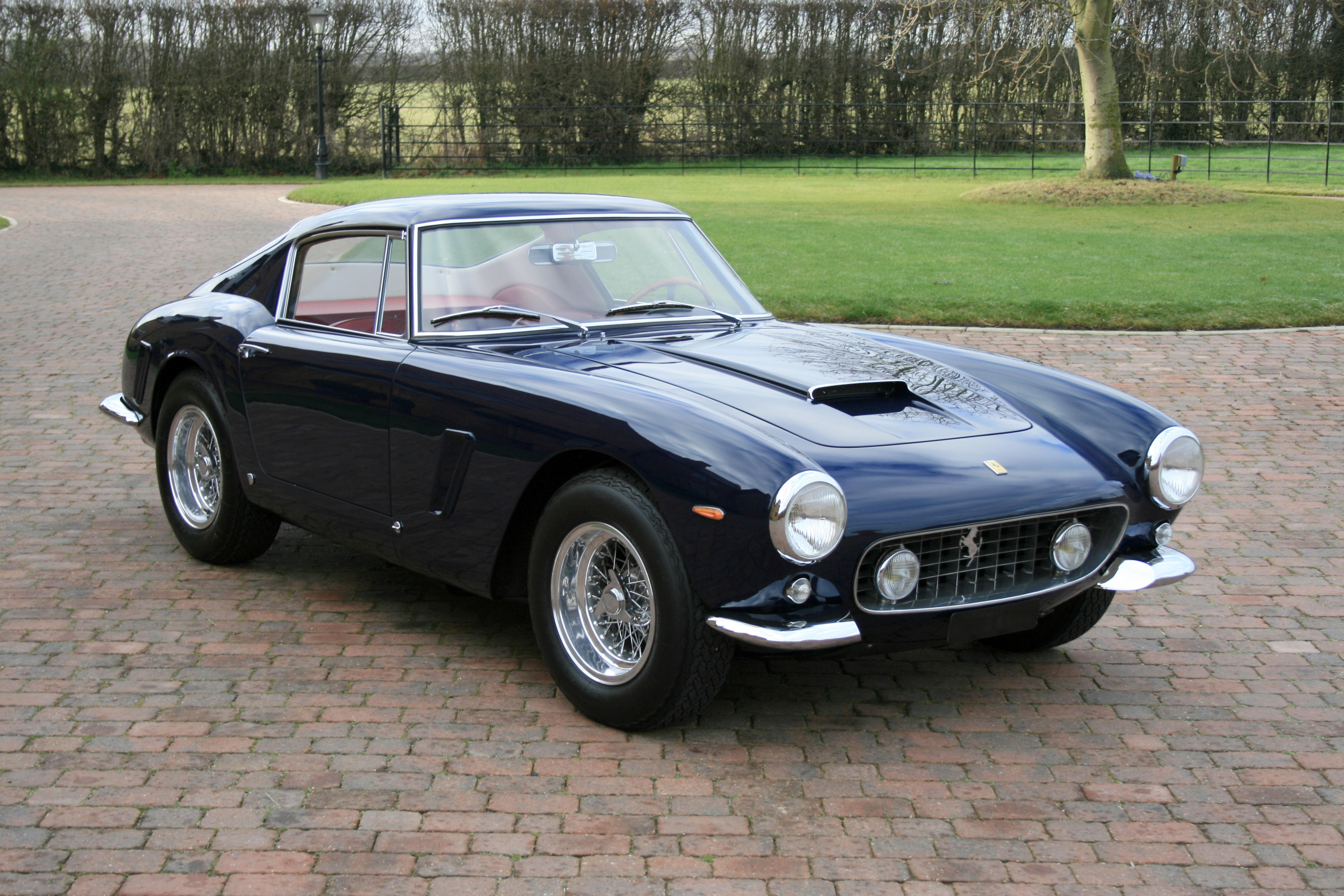
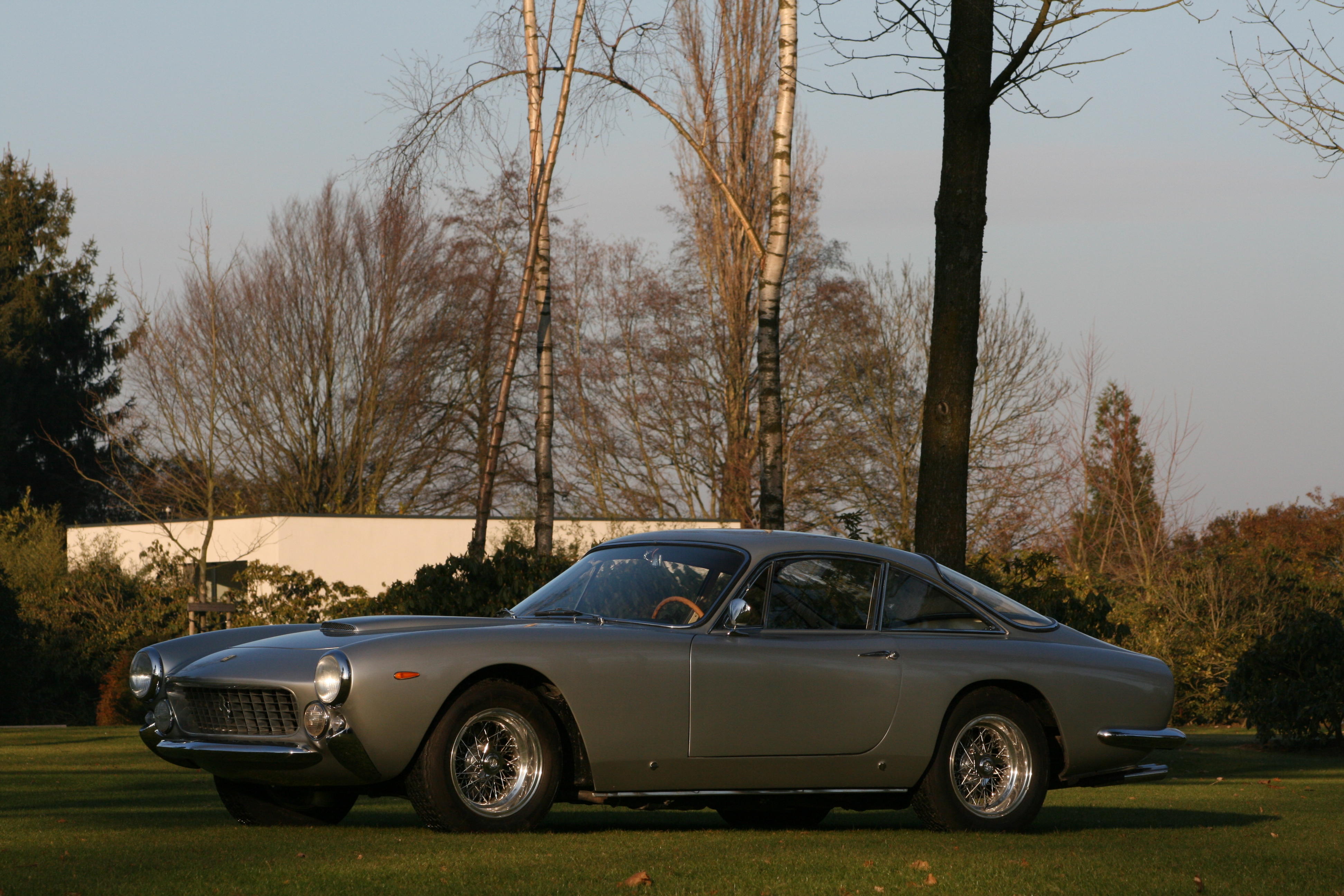
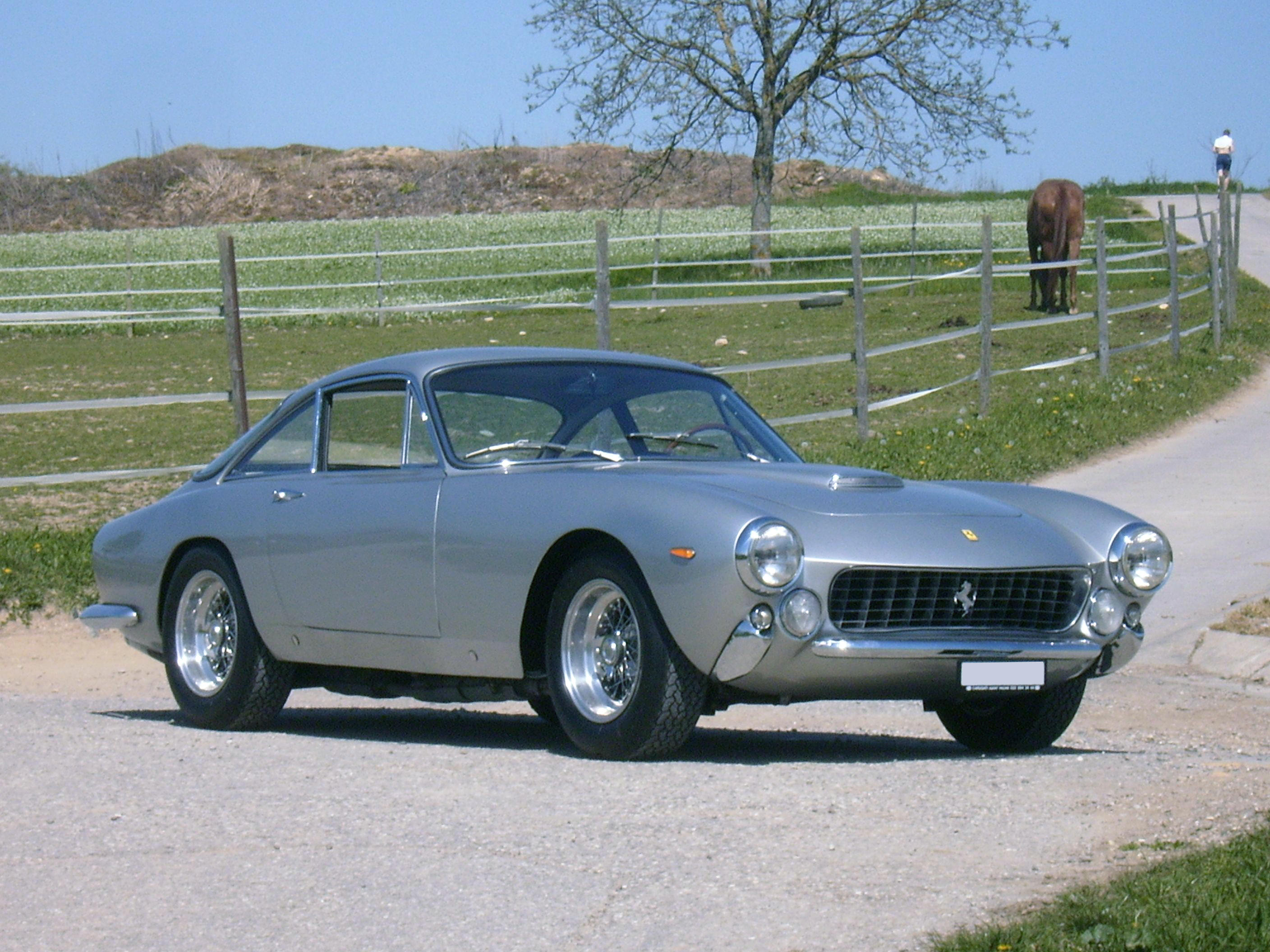
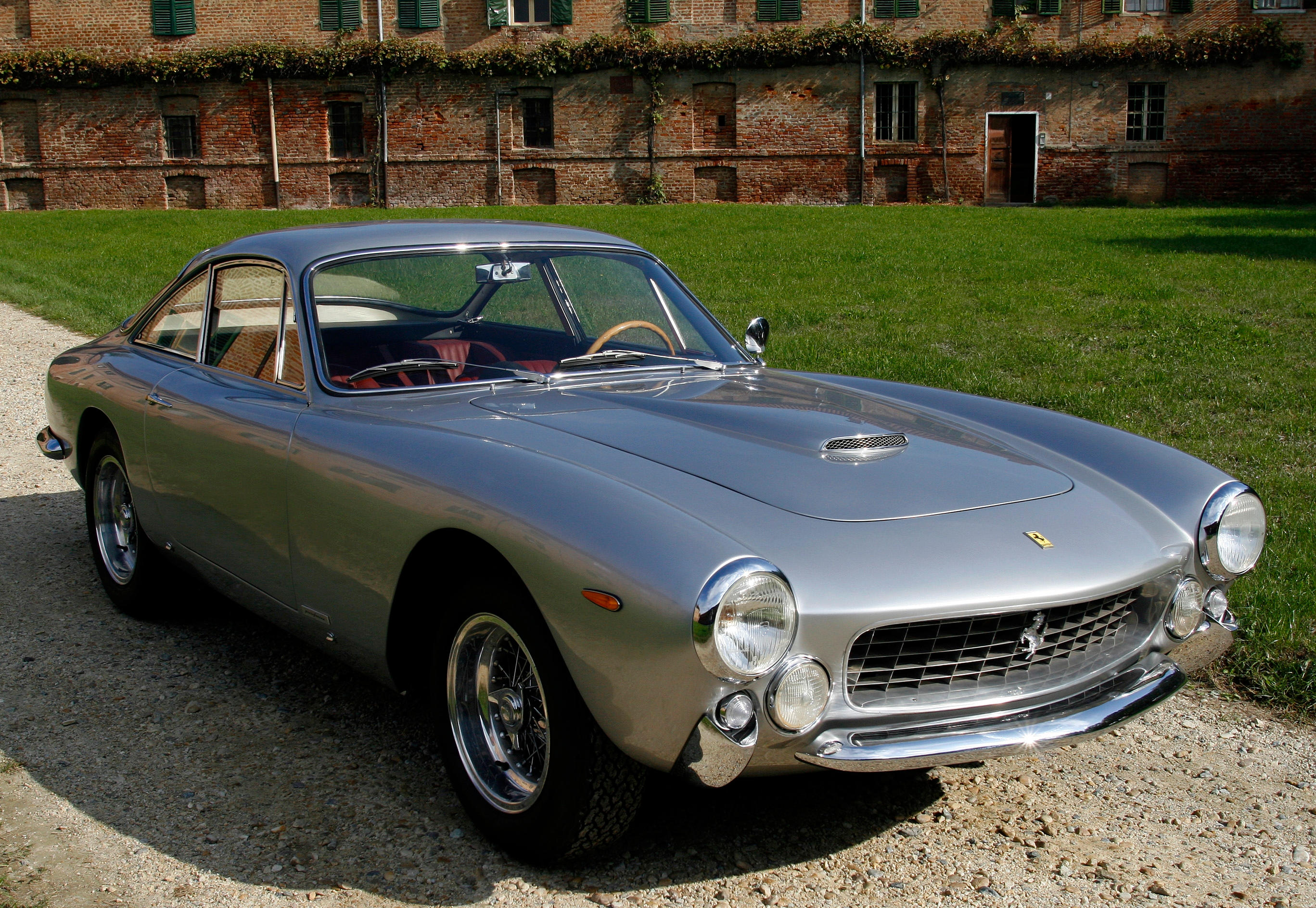
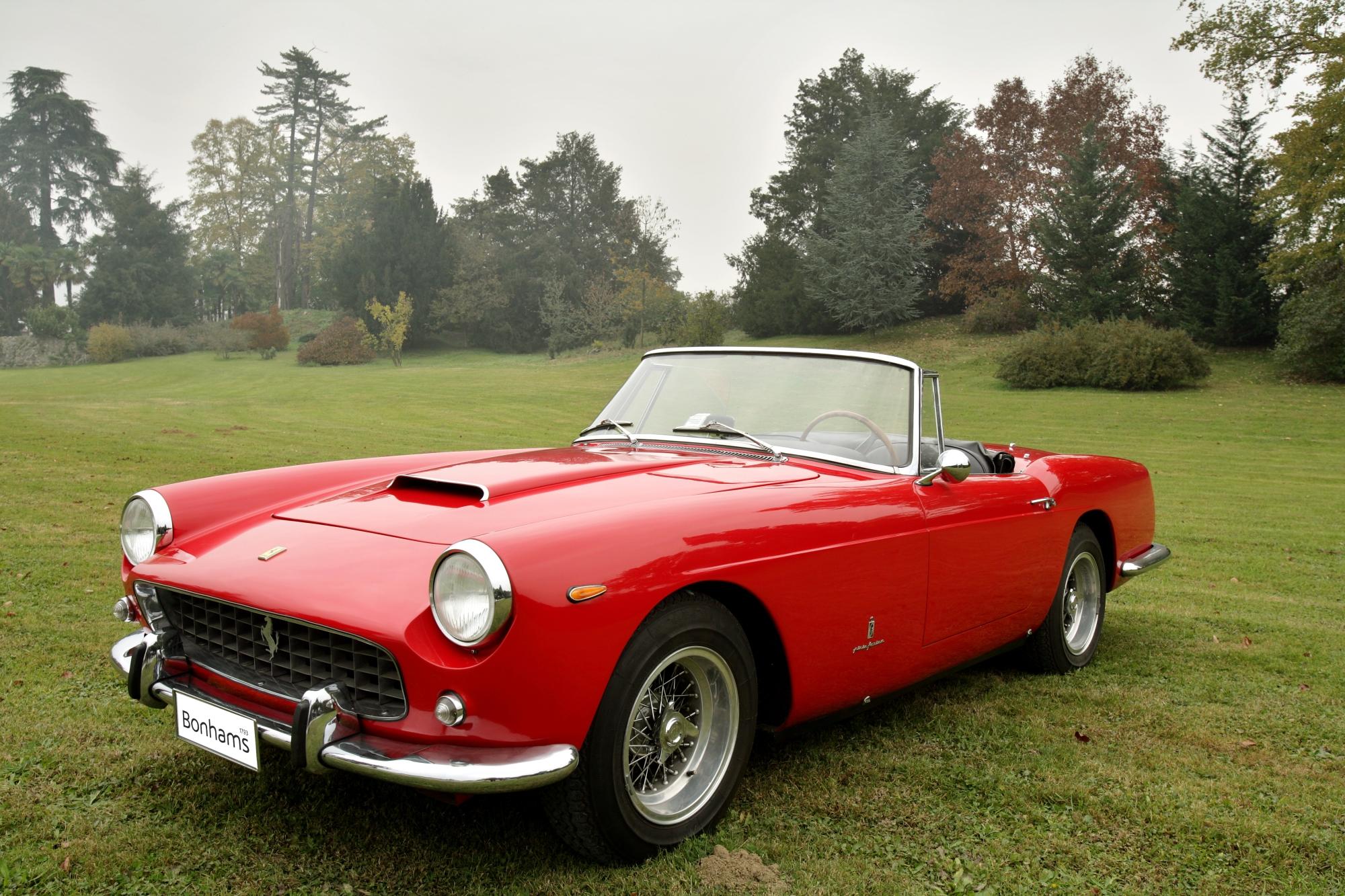
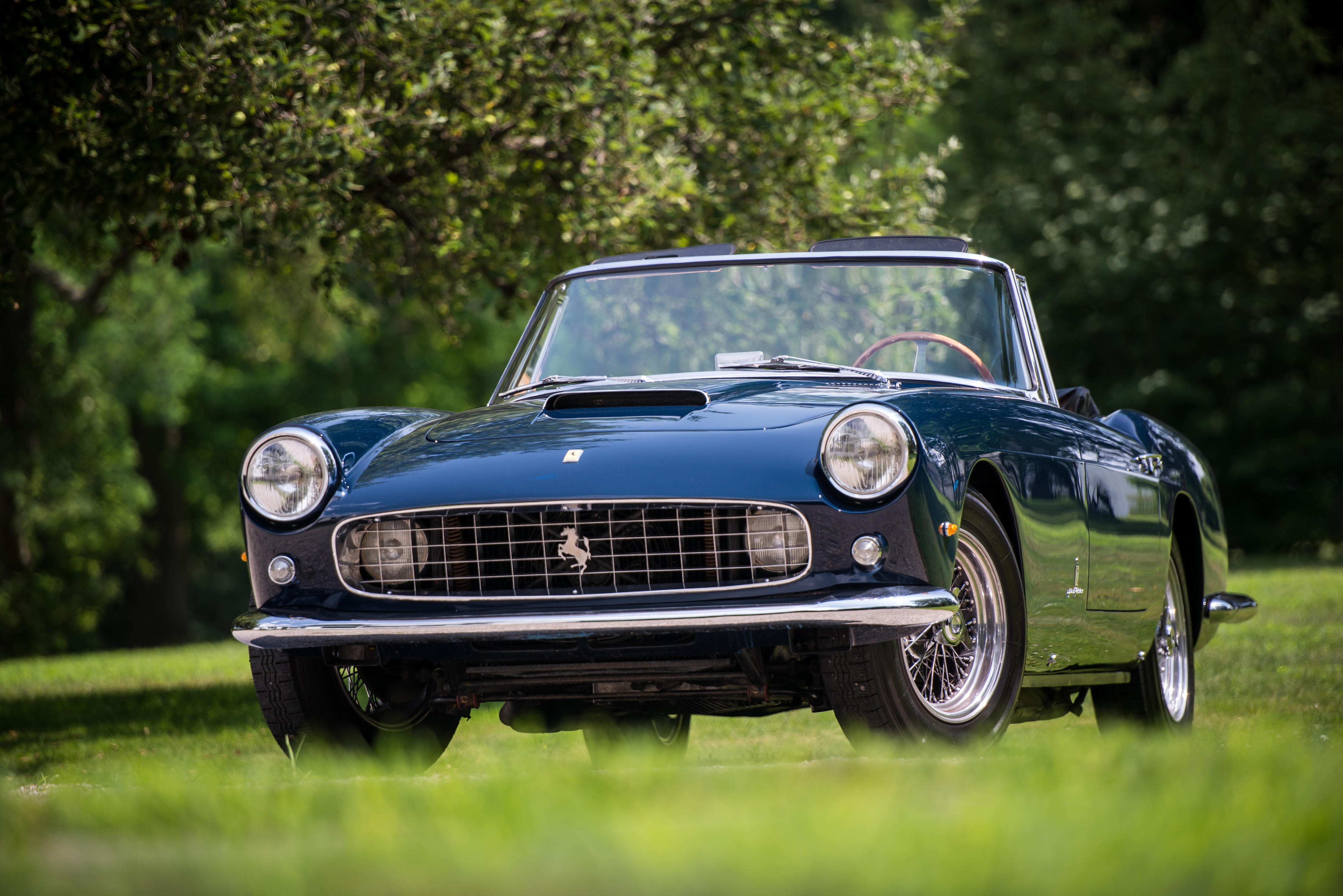
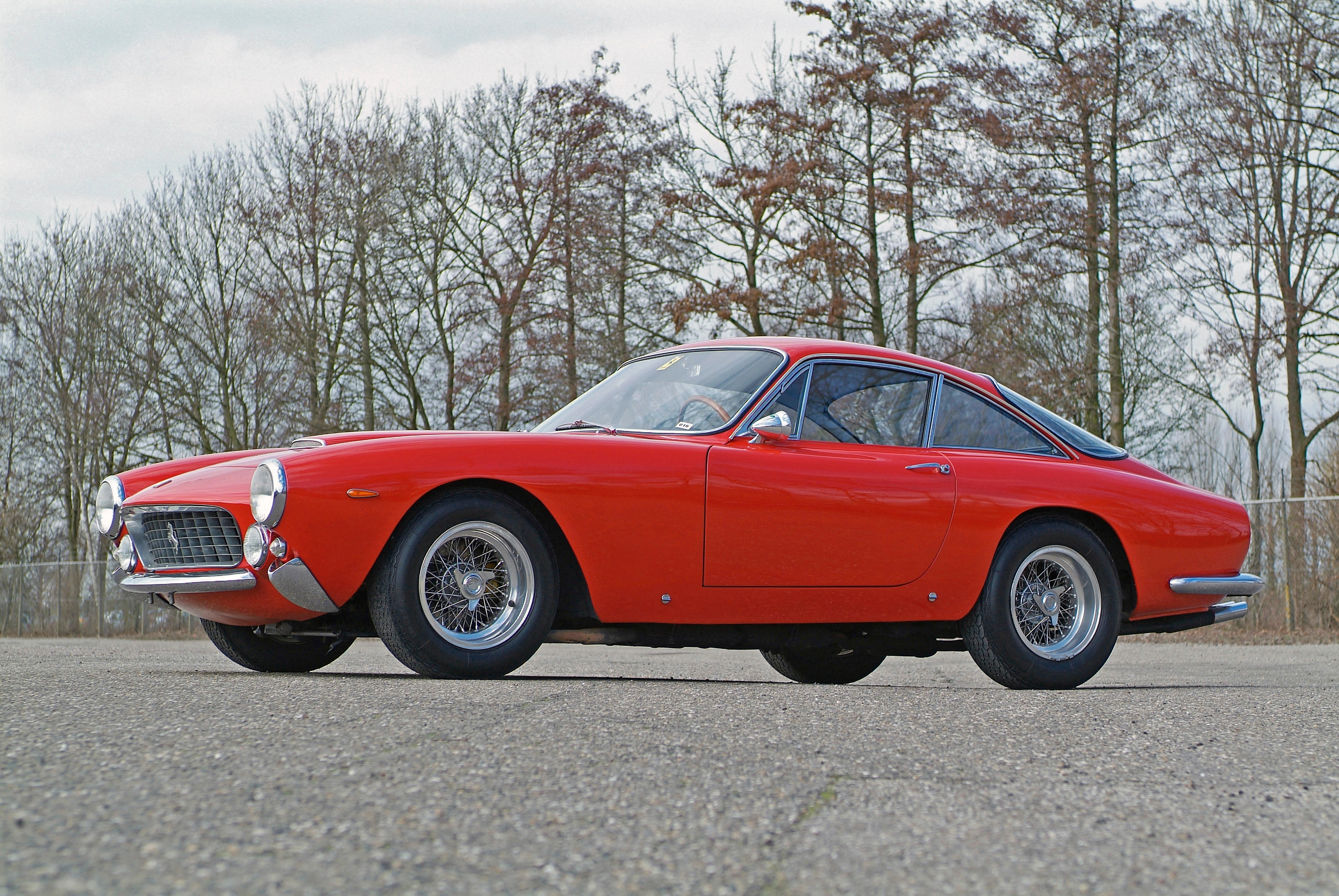
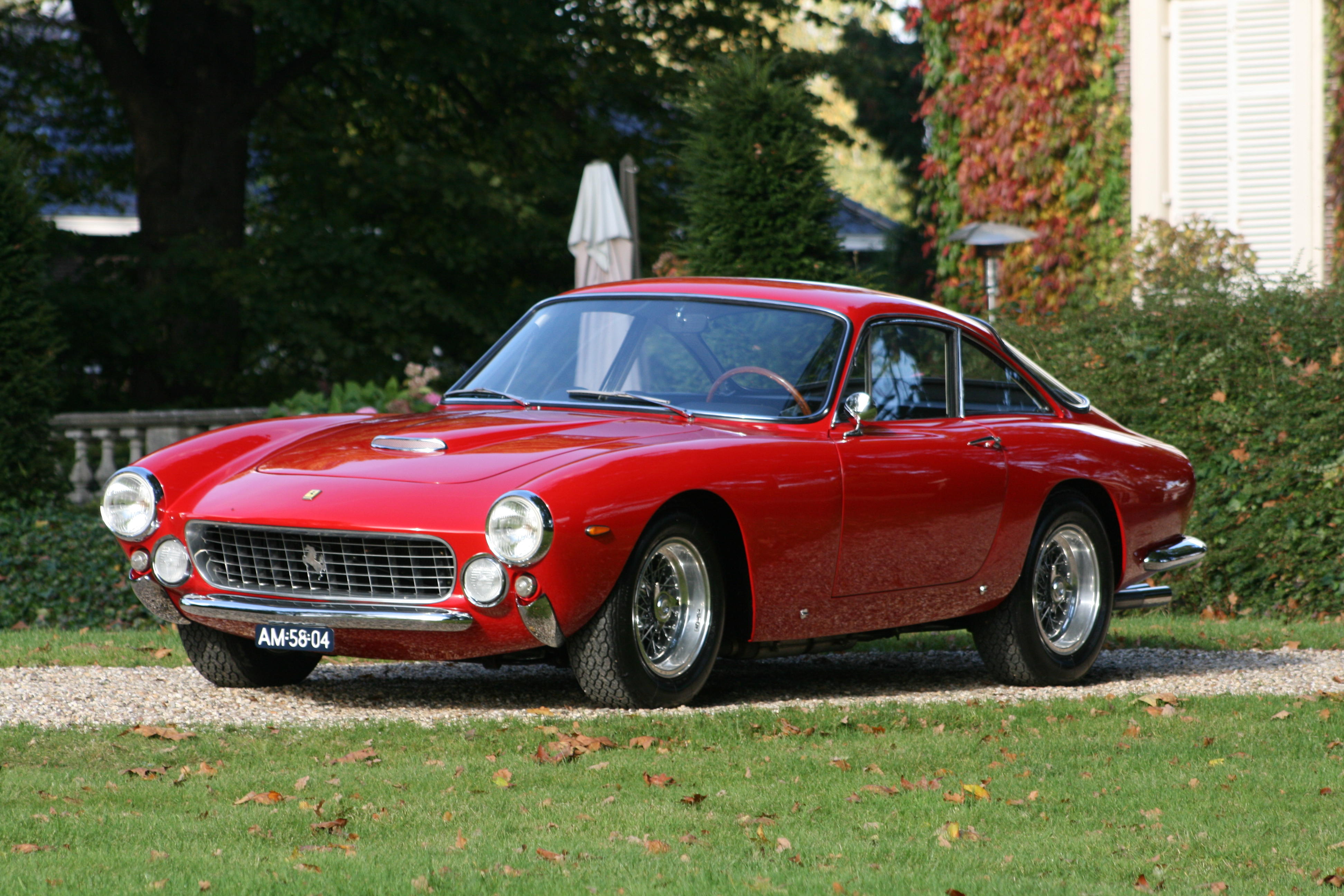
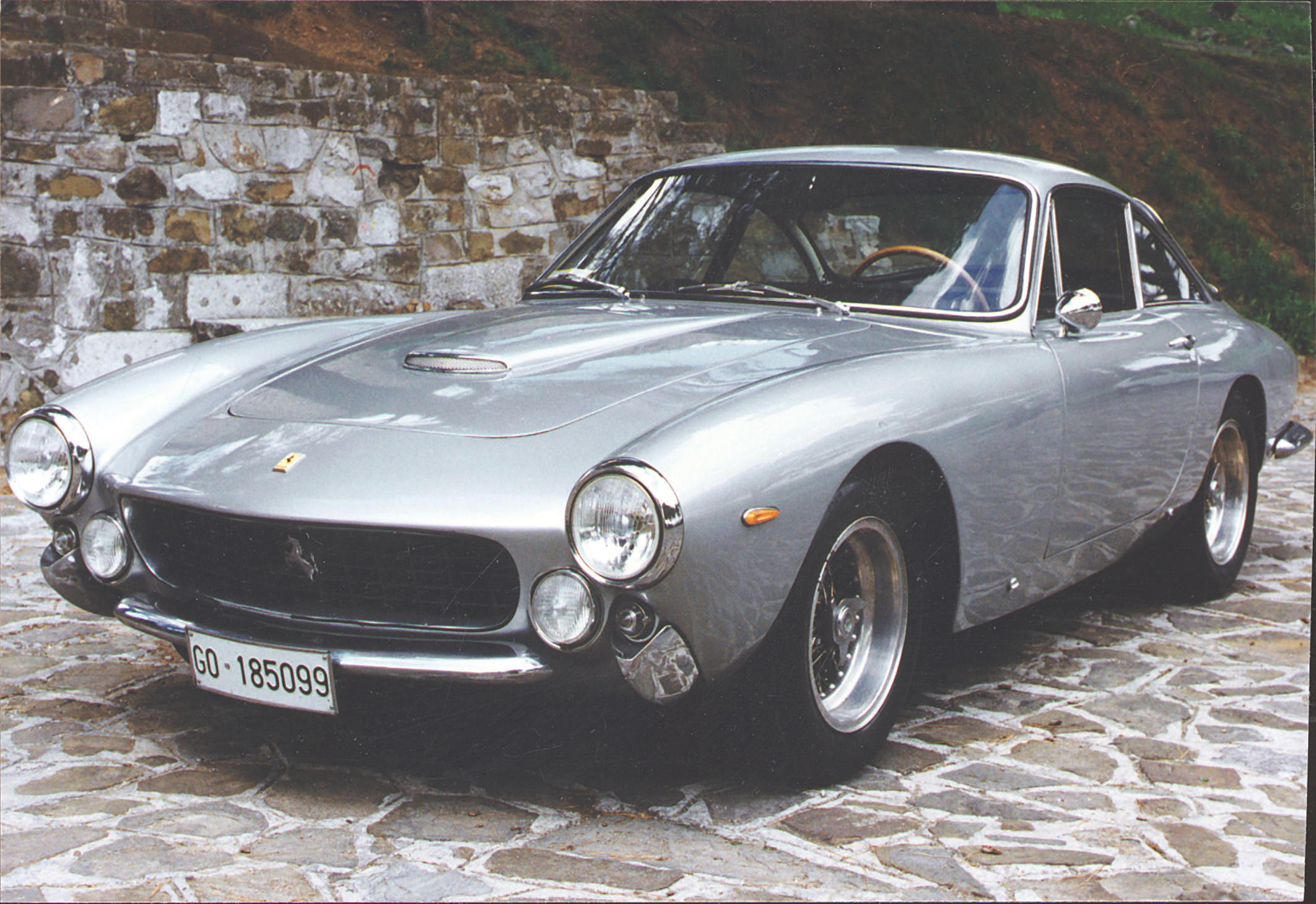
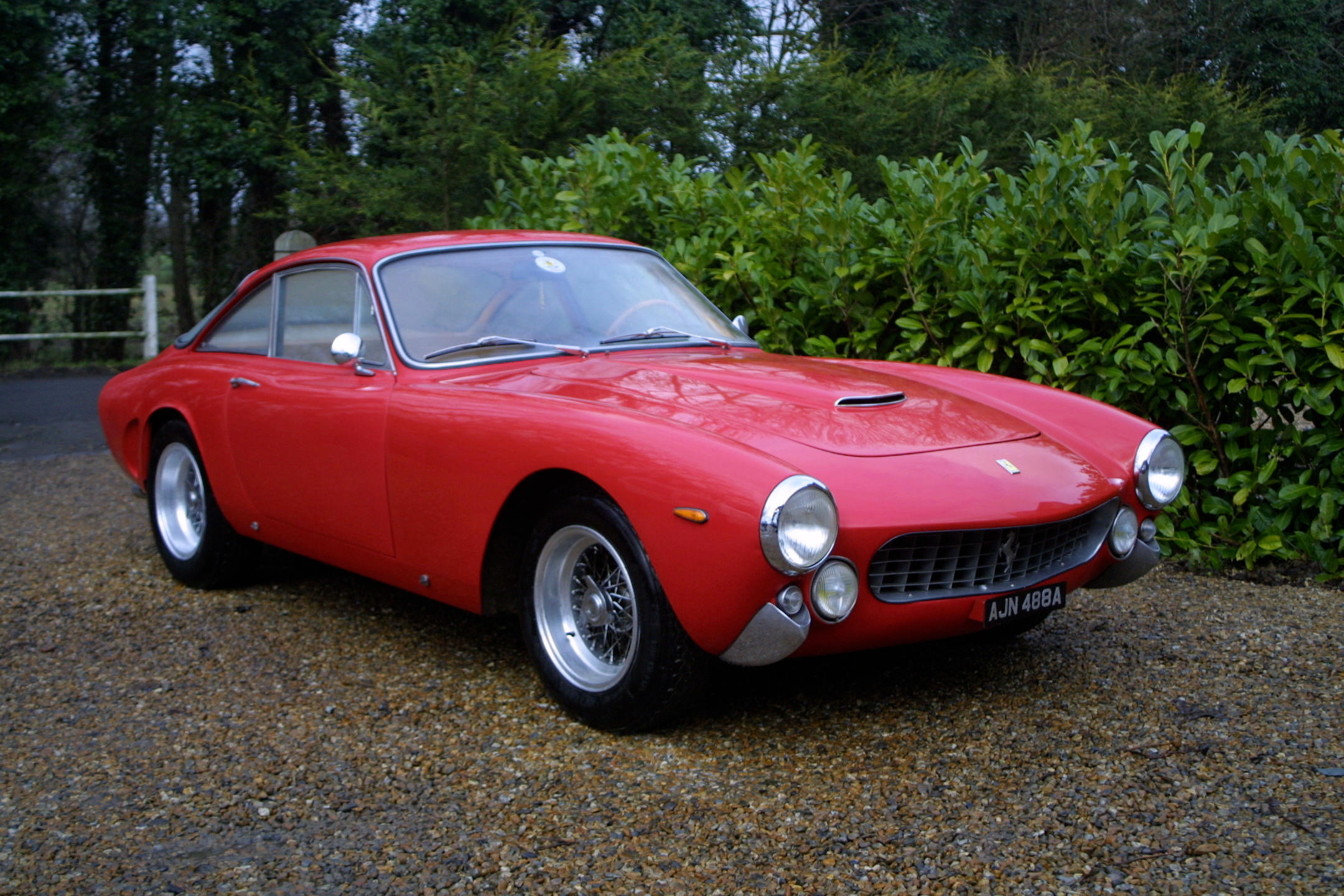
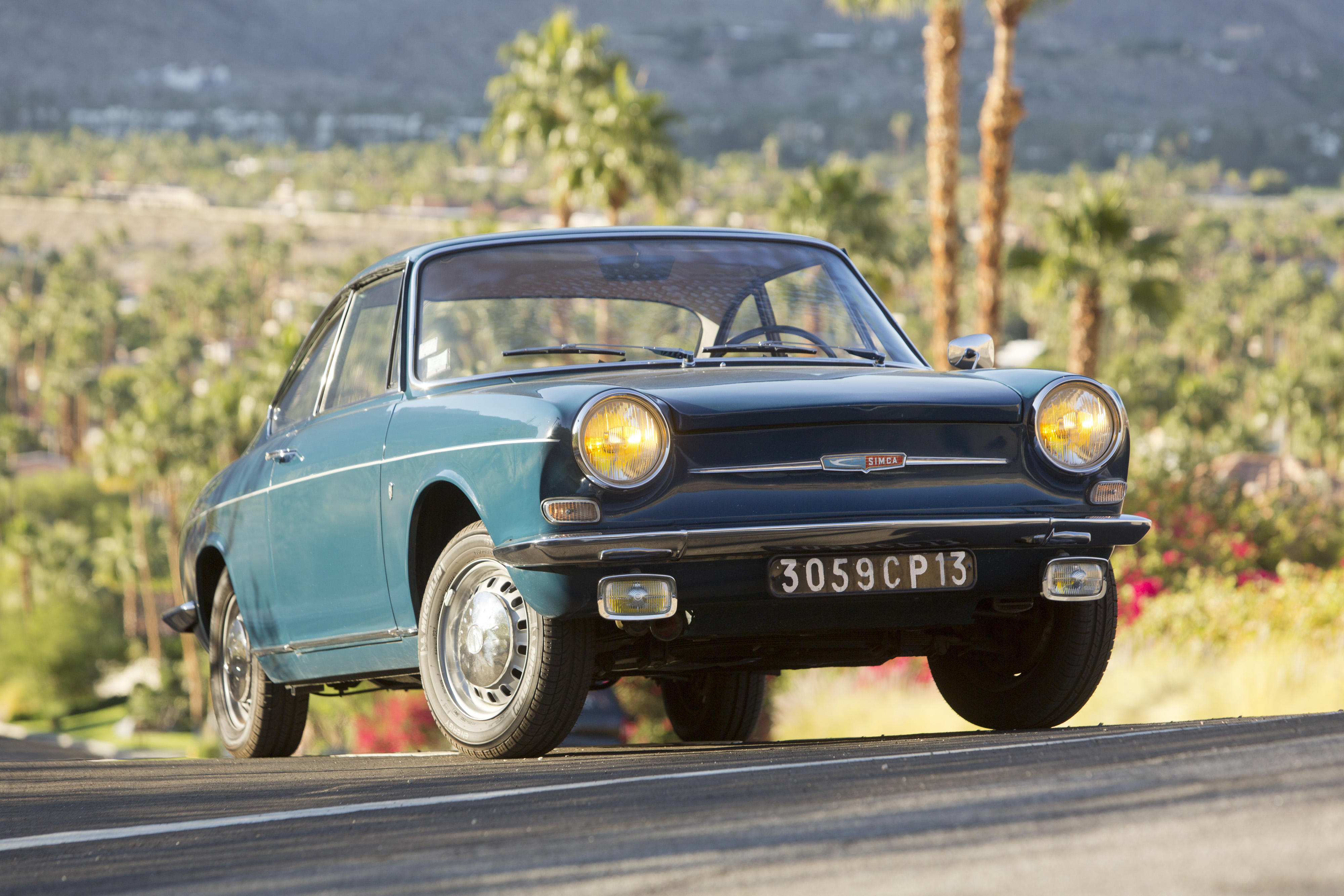
Testen Sie LotSearch und seine Premium-Features 7 Tage - ohne Kosten!
Lassen Sie sich automatisch über neue Objekte in kommenden Auktionen benachrichtigen.
Suchauftrag anlegen